Posterior approach to the humeral shaft
1. Introduction
The posterior approach provides excellent access to the lower ¾ of the humeral shaft for reduction and fixation. It can be extended distally, leaving the triceps insertion intact.
There are two options to access the posterior aspect of the humeral shaft:
- Triceps sparing
- Triceps splitting
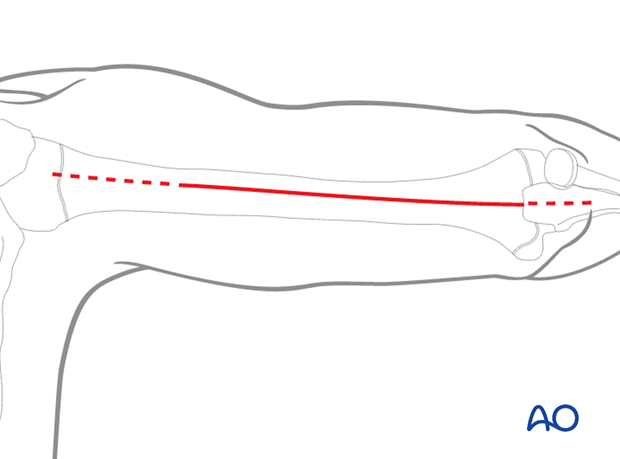
Neural anatomy
Be aware of the anatomy of the nerves around the humerus.
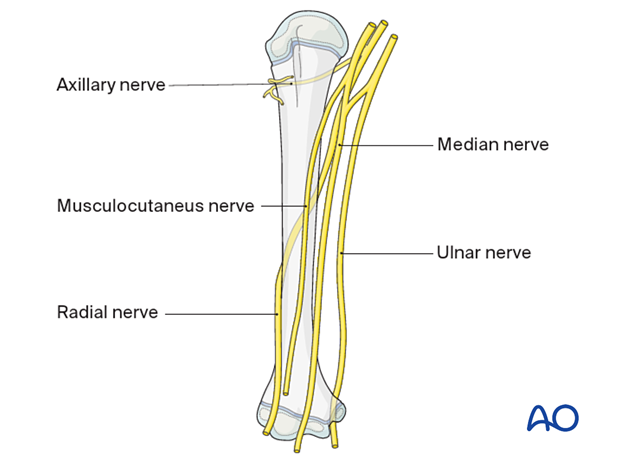
2. Skin incision
The incision runs proximally in a straight line from the olecranon along the posterior midline of the arm. It crosses the radial nerve in the mid-humeral region and the axillary nerve proximally.
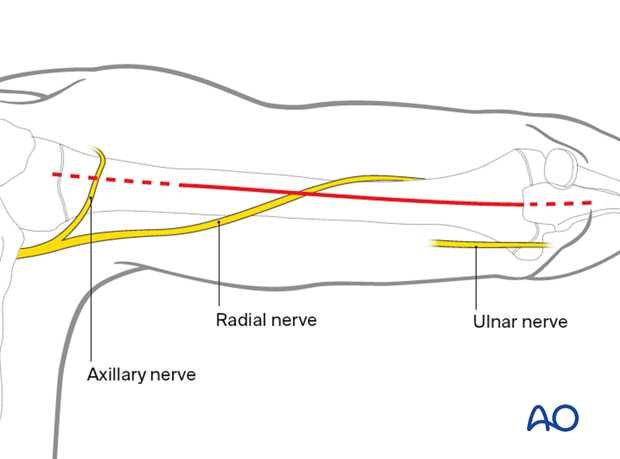
3. Superficial dissection
Incise the deep fascia in line with the skin incision raising two fasciocutaneous flaps.
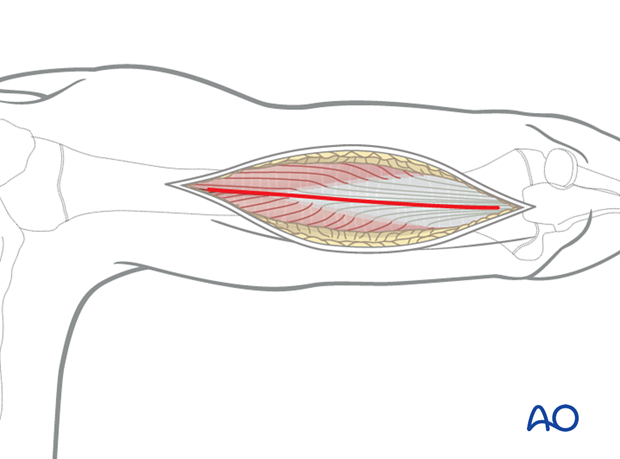
4. Triceps-sparing approach
The triceps is elevated from the posterior humerus, but its insertion is not disturbed (triceps-sparing). This retains the musculotendinous integrity of the triceps and allows more rapid postoperative rehabilitation.
Ulnar window
As a first step, identify and mobilize the ulnar nerve and protect it with a vessel loop.
Follow the ulnar nerve proximally along its course on the medial intermuscular septum.
Ensure that a vessel loop does not injure the ulnar nerve by uncontrolled traction. Do not use heavy clamps to secure the loop.
Mobilize the triceps and retract it laterally. This may be achieved by blunt dissection of the medial head of the triceps from the posterior aspect of the humerus.
Depending on the fracture location the exposure may need to be extended distally.
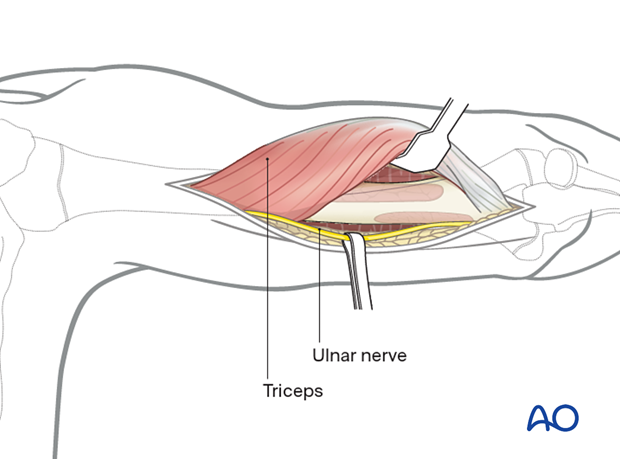
Radial window
Split the triceps fascia and mobilize the lateral head of the triceps from the lateral intermuscular septum and humerus towards the ulnar side.
If necessary, dissect muscle fibers that remain attached to the posterior aspect of the humerus, from the lateral side.
This permits the whole triceps muscle to be moved towards either the lateral or medial side, to provide access to the humerus (triceps flip).
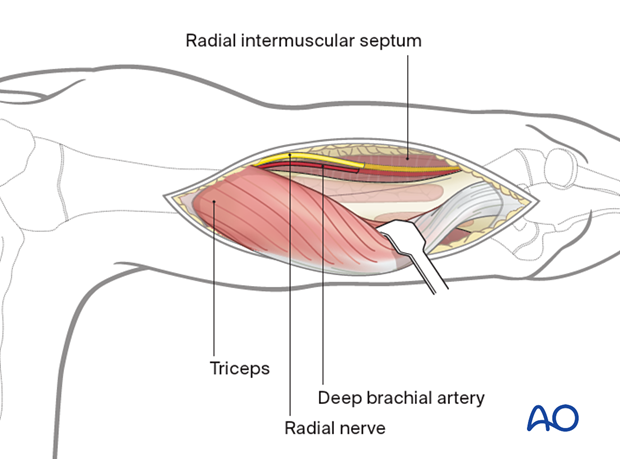
In children 6 years and older, the crossing point of the radial nerve is similar to the adult position.
In children younger than 6 years, the position of the neurovascular safe zone is in the window between the distal physis and 1 cm per year of age proximal to the physis.
- Nielsen E, Andras LM, Skaggs DL. Quantifying the Location of the Radial Nerve in Children for Intraoperative Use. J Pediatr Orthop. 2018 May/Jun;38(5):e292–e295.
The radial nerve can also be detected as it penetrates the intermuscular septum and followed upwards in the radial groove.
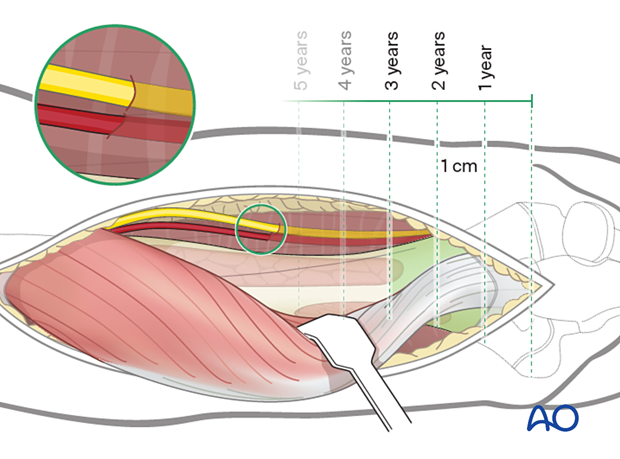
The entire triceps may be elevated with a gauze wrap.

5. Triceps-split approach
An alternative approach is the triceps split, but this may be associated with a higher risk of radial nerve injury due to the proximity of the neurovascular structures.
Attention should be paid to the identification and protection of the radial nerve.
See the adult section for further details.
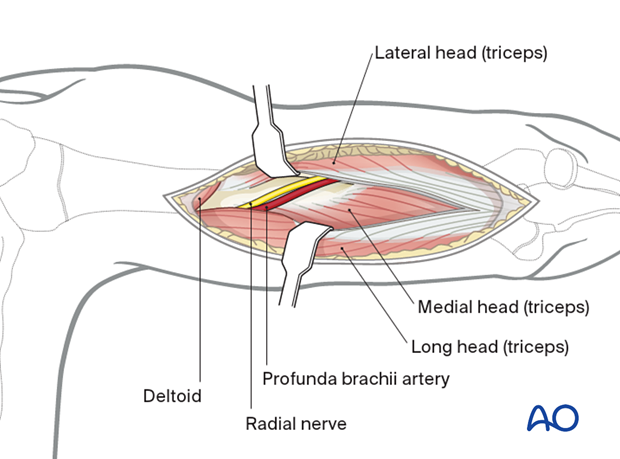
6. Wound closure
Close the wound in layers with resorbable sutures in a standard manner.














